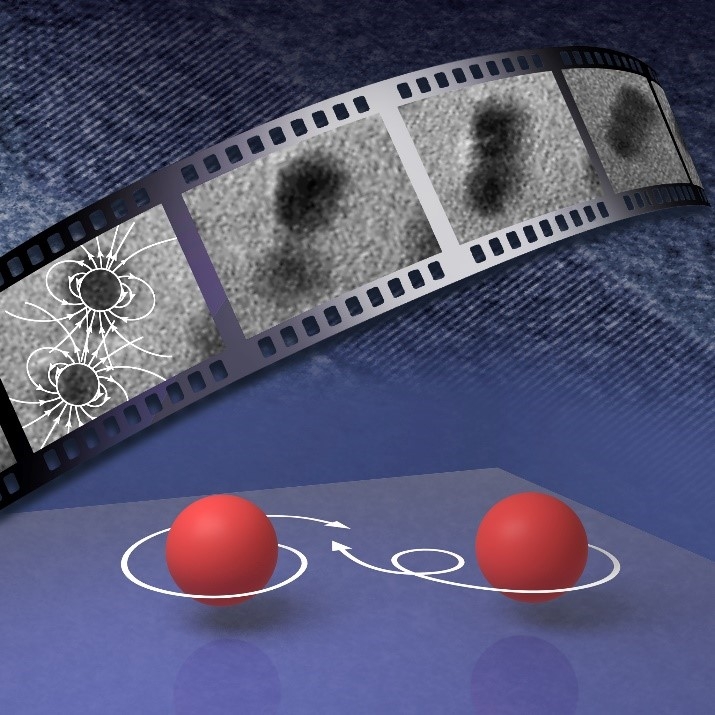The Science
Researchers have established a quantitative understanding of how nano-sized particles assemble and crystalize for a model system of semiconductor zinc oxide. A nanometer is about 50,000 times smaller than the width of a human hair. Each particle is positively and negatively charged on opposite sides, creating an electrical analogue of a magnet called an electric dipole. The main driving force for assembly is the weak long-range attractive interaction between such dipoles. These interactions align the crystal faces of the particles prior to their collision. As the particles get much closer together, stronger attractive forces drive the final jump to connect the particles in a particular shape.
The Impact
This new understanding is profoundly important for using particles to design and synthesize materials with desired arrangements and shapes. It also helps scientists understand how minerals form in the earth and in biological systems. Moreover, the research expands potential applications for zinc oxide. For example, the material may help prevent the degradation of cell phone batteries and solar panels.
Summary
Researchers used electron microscopy to observe how single particles and multiple particles assemble in real time as they move through a liquid. The researchers also used physics-based computer simulations to understand the forces at play between the particles as the particles moved and responded to each other’s movement. The combination of experiment and computation gave the researchers a quantitative understanding of the relationship between the structure and surface chemistry of the nanocrystals, the structure of the solvent between the crystal surfaces, the forces that attract and repel the crystals, the effect of fluid viscosity on particle movement and rotation, and the resulting particle response. One surprising finding is that associations between the electrically polar particles and the surrounding liquid, as well as associations between the particles, act well beyond the expected distances for such interactions. These associations created the forces and torques that drove the orientation of particles before they attached. The alignment between the 5 nanometer-sized crystals was achieved at distance as much as 10 nanometers apart before strong attractions drove the final jump to contact over the last nanometer.
Funding
This work was supported by the Department of Energy Office of Science, Basic Energy Sciences program’s Division of Materials Science and Engineering and Division of Chemical Sciences, Geosciences, and Biosciences.



